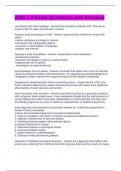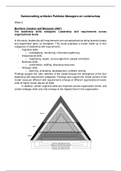Tentamen (uitwerkingen)
ASD 1-3 Exam Questions and Answers
Leo Kanner and Hans Asperger - Answer-first scientists to identify ASD. First was in America with his paper second was in Austria Kanner's early descriptions of ASD - Answer--profound lack of affective contact with others -intense resistance to change in routines -fascination with manipulati...
[Meer zien]





